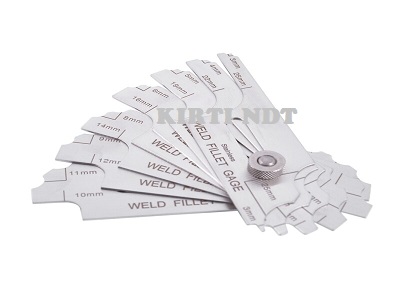Gauge Fillet Weld Explained: From Fundamentals to Advanced Techniques
Gauge Fillet Weld Explained: From Fundamentals to Advanced Techniques
Blog Article
Exploring the Benefits of Fillet Welding in Manufacture: Economical Solutions for Diverse Industries
In the world of fabrication, the use of fillet welding presents a compelling recommendation for sectors looking for cost-effective services without endangering architectural integrity. The advantages of fillet welding expand past mere monetary savings to include enhanced architectural efficiency, flexibility throughout diverse commercial applications, and the assurance of exceptional toughness and sturdiness. As we browse through the useful advantages that fillet welding offers, a much deeper understanding emerges of how this welding strategy can transform construction processes across different fields.

Cost-Effective Remedy for Construction
Fillet welding acts as a cost-effective service in construction processes, providing both efficiency and longevity. This welding strategy entails joining two items of metal at an angle, creating a triangular cross-section. The simplicity of fillet welding makes it a preferred selection in various markets, consisting of building and construction, auto, and production.
One of the essential advantages of fillet welding is its capability to decrease material and labor costs. By using fillet welds as opposed to other complicated joint styles, producers can conserve money on products and manufacturing time. In addition, fillet welding needs minimal preparation contrasted to other welding techniques, even more decreasing manufacture expenses.
Furthermore, fillet welds provide outstanding architectural strength, making certain the durability and toughness of the fabricated elements. The triangular form of the weld distributes tension more equally, decreasing the probability of joint failure (Gauge Fillet Weld). This structural integrity not only boosts the total high quality of the finished item however additionally reduces maintenance and repair service prices over time
Boosted Architectural Performance With Fillet Welding
Enhancing structural effectiveness through the application of fillet welding techniques is an essential facet of making sure optimum performance and durability in fabricated frameworks. Fillet welding plays a crucial role in improving structural performance by properly dispersing loads and stresses throughout the welded joints. By creating a smooth shift in between the connected components, fillet welds help to enhance the overall stamina and security of the framework.
One of the substantial advantages of fillet welding in enhancing architectural performance is its ability to sign up with materials of differing thicknesses. This versatility enables the building of light-weight structures without jeopardizing on toughness. Additionally, the smooth account of fillet welds minimizes stress concentrations, which can assist stop early failing of the welded joints.
Moreover, fillet welding enables the construction of complicated geometries with convenience, providing designers with more flexibility in producing efficient and ingenious frameworks. By maximizing the design and placement of fillet welds, engineers can make the most of the structural effectiveness of produced parts, inevitably bring about cost savings and improved performance in diverse industries.
Flexibility in Diverse Market Applications
With its capability to accommodate a wide variety of material thicknesses and geometric intricacies, fillet welding stands as a versatile manufacture method that locates applications across varied industries. One crucial location where fillet welding succeeds remains in the production sector, where it is used in the production of heavy machinery, tools, and structural elements. The automobile market also profits from fillet welding, using it in the assembly of car frameworks, chassis, and other vital structures. In the building area, fillet welding plays a vital function in joining steel beam of lights, columns, and other architectural elements. Furthermore, the aerospace market relies on fillet welding for the manufacture of airplane components, guaranteeing stamina and toughness in vital parts. In addition, the oil and gas market makes use of fillet welding in the construction of pipes, systems, and tank, where the durable welds offer honesty and durability to these frameworks. On the whole, the flexibility of fillet welding makes it a crucial process in numerous industries, supplying affordable services for intricate fabrication needs.

Superior Strength and Resilience
Fillet welding plays a crucial role in accomplishing these get more features due to its capacity to supply substantial strength by distributing tons equally throughout the welded joint. As an outcome, structures fabricated using fillet welds display raised durability and can endure considerable mechanical pressures without endangering their honesty.
The exceptional stamina and longevity provided by fillet welding make it an ideal selection for applications in markets such as construction, automotive, aerospace, and production, where architectural honesty is vital. By utilizing fillet welds in fabrication, engineers and makers can ensure that their products meet stringent quality and security criteria while maximizing cost-effectiveness and manufacturing efficiency. Fundamentally, the exceptional resilience and longevity supplied by fillet welding make it a favored welding method for developing robust and resilient frameworks across varied industries.
Practical Benefits of Fillet Welding
Offered the demonstrated premium strength and durability in bonded joints, the useful advantages of fillet welding extend beyond structural honesty to incorporate efficiency and cost-effectiveness in fabrication procedures. Additionally, fillet welding allows for boosted performance due to its convenience in joining various kinds of densities, forms, and products. In general, the sensible advantages of fillet welding make it a beneficial choice for firms More about the author looking for click for source economical and reliable solutions in fabrication.
Conclusion
Finally, fillet welding offers a cost-effective option for construction, supplying improved structural efficiency, versatility in diverse market applications, superior toughness, and durability. The practical benefits of fillet welding make it a recommended option for various fabrication tasks across various sectors. Its capacity to efficiently join products while preserving structural stability makes it a valuable strategy for making sure top notch and reputable lead to welding applications.

Additionally, fillet welding calls for very little preparation contrasted to other welding strategies, even more reducing fabrication expenses.

Provided the demonstrated remarkable strength and resilience in bonded joints, the functional advantages of fillet welding expand past structural stability to encompass effectiveness and cost-effectiveness in construction procedures - Gauge Fillet Weld.In conclusion, fillet welding uses a cost-efficient remedy for construction, offering enhanced architectural effectiveness, versatility in diverse sector applications, exceptional strength, and durability
Report this page